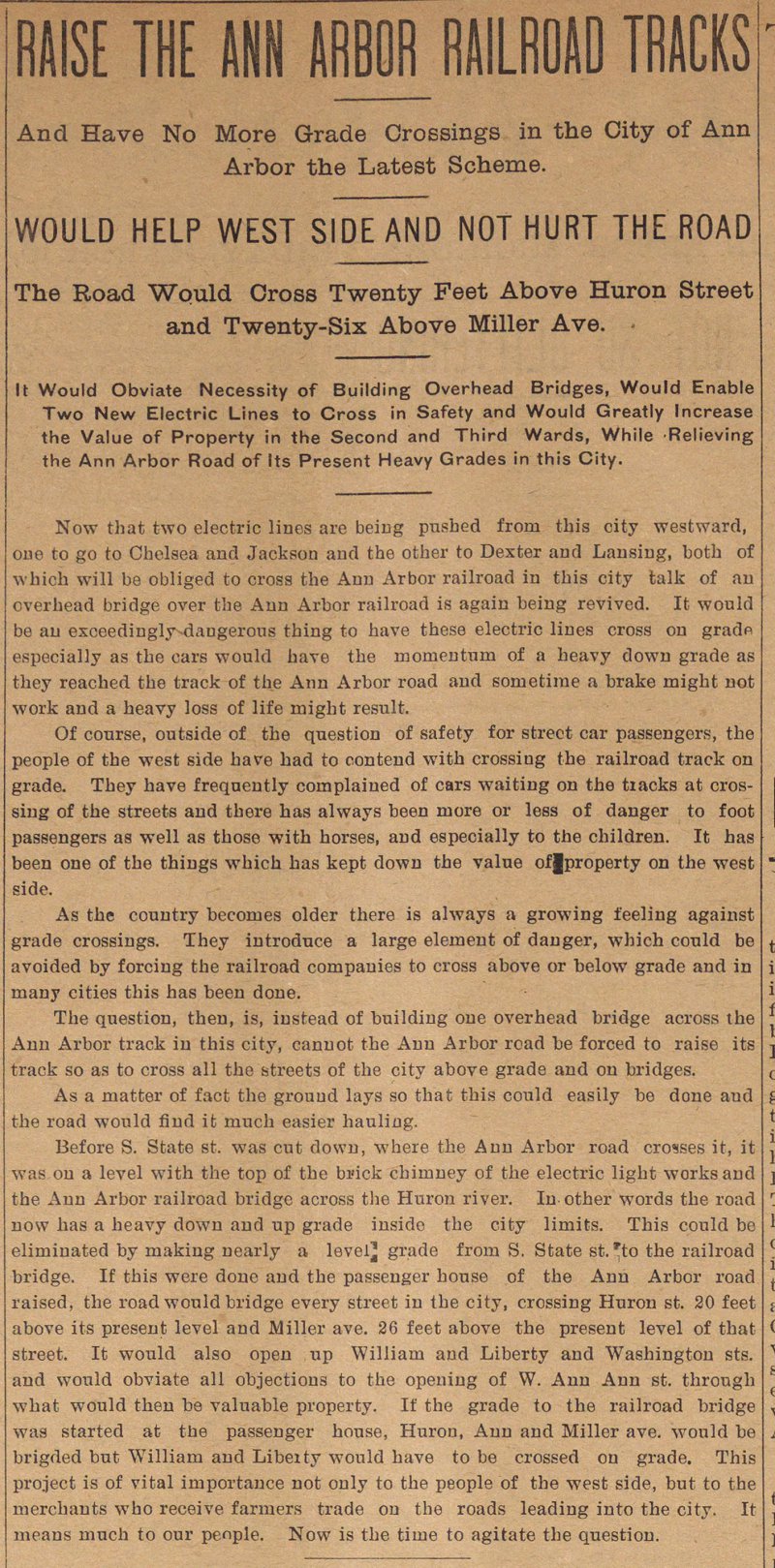Raise The Ann Arbor Railroad Tracks

Now that two electric lines are being pushed from this city westward, one to go to Chelsea and Jackson and the other to Dexter and Lansing, both of which will be obliged to cross the Ann Arbor railroad in this city talk of an overhead bridge over the Ann Arbor railroad is again being revived. It would be an exceedingly-dangerous thing to have these electric lines cross on grade especially as the cars would have the momentum of a heavy down grade as they reached the track of the Ann Arbor road and sometime a brake might not work and a heavy loss of life might result.
Of course, outside of the question of safety for street car passengers, the people of the west side have had to contend with crossing the railroad track on grade. They have frequently complained of cars waiting on the tracks at crossing of the streets and there has always been more or less of danger to foot passengers as well as those with horses, and especially to the children. It has been one of the things which bas kept down the value of property on the west side.
As the country becomes older there is always a growing feeling against grade crossings. They introduce a large element of danger, which could be avoided by forcing the railroad companies to cross above or below grade and in many cities this has been done. The question, then, is, instead of building one overhead bridge across the Ann Arbor track in this city, cannot the Ann Arbor road be forced to raise its track so as to cross all the streets of the city above grade and on bridges.
As a matter of fact the ground lays so that this could easily be done and the road would find it much easier hauling.
Before S. State st. was cut clown, where the Ann Arbor road crosses it, it was on a level with the top of the brick chimney of the electric light works and the Ann Arbor railroad bridge across the Huron river. In other words the road now has a heavy down and up grade inside the city limits. This could be eliminated by making nearly a level grade from S. State st. to the railroad bridge. If this were done and the passenger house of the Ann Arbor road raised, the road would bridge every street in the city, crossing Huron st. 20 feet above its present level and Miller ave. 26 feet above the present level of that street. It would also open up William and Liberty and Washington sts. and would obviate all objections to the opening of W. Ann Ann st. through what would then be valuable property. If the grade to the railroad bridge was started at the passenger house, Huron, Ann and Miller ave. would be bridged but William and Liberty would have to be crossed on grade. This project is of vital importance not only to the people of the west side, but to the merchants who receive farmers trade on the roads leading into the city. It means much to our people. Now is the time to agitate the question.
Article
Subjects
Old News
Ann Arbor Argus-Democrat